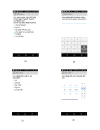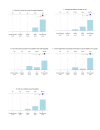Evaluation of Electronic and Paper-Pen Data Capturing Tools for Data Quality in a Public Health Survey in a Health and Demographic Surveillance Site, Ethiopia: Randomized Controlled Crossover Health Care Information Technology Evaluation
- PMID: 30741642
- PMCID: PMC6388101
- DOI: 10.2196/10995
Evaluation of Electronic and Paper-Pen Data Capturing Tools for Data Quality in a Public Health Survey in a Health and Demographic Surveillance Site, Ethiopia: Randomized Controlled Crossover Health Care Information Technology Evaluation
Abstract
Background: Periodic demographic health surveillance and surveys are the main sources of health information in developing countries. Conducting a survey requires extensive use of paper-pen and manual work and lengthy processes to generate the required information. Despite the rise of popularity in using electronic data collection systems to alleviate the problems, sufficient evidence is not available to support the use of electronic data capture (EDC) tools in interviewer-administered data collection processes.
Objective: This study aimed to compare data quality parameters in the data collected using mobile electronic and standard paper-based data capture tools in one of the health and demographic surveillance sites in northwest Ethiopia.
Methods: A randomized controlled crossover health care information technology evaluation was conducted from May 10, 2016, to June 3, 2016, in a demographic and surveillance site. A total of 12 interviewers, as 2 individuals (one of them with a tablet computer and the other with a paper-based questionnaire) in 6 groups were assigned in the 6 towns of the surveillance premises. Data collectors switched the data collection method based on computer-generated random order. Data were cleaned using a MySQL program and transferred to SPSS (IBM SPSS Statistics for Windows, Version 24.0) and R statistical software (R version 3.4.3, the R Foundation for Statistical Computing Platform) for analysis. Descriptive and mixed ordinal logistic analyses were employed. The qualitative interview audio record from the system users was transcribed, coded, categorized, and linked to the International Organization for Standardization 9241-part 10 dialogue principles for system usability. The usability of this open data kit-based system was assessed using quantitative System Usability Scale (SUS) and matching of qualitative data with the isometric dialogue principles.
Results: From the submitted 1246 complete records of questionnaires in each tool, 41.89% (522/1246) of the paper and pen data capture (PPDC) and 30.89% (385/1246) of the EDC tool questionnaires had one or more types of data quality errors. The overall error rates were 1.67% and 0.60% for PPDC and EDC, respectively. The chances of more errors on the PPDC tool were multiplied by 1.015 for each additional question in the interview compared with EDC. The SUS score of the data collectors was 85.6. In the qualitative data response mapping, EDC had more positive suitability of task responses with few error tolerance characteristics.
Conclusions: EDC possessed significantly better data quality and efficiency compared with PPDC, explained with fewer errors, instant data submission, and easy handling. The EDC proved to be a usable data collection tool in the rural study setting. Implementation organization needs to consider consistent power source, decent internet connection, standby technical support, and security assurance for the mobile device users for planning full-fledged implementation and integration of the system in the surveillance site.
Keywords: Ethiopia; data collection; data quality; mHealth; maternal health; public health; surveillance; survey; tablet computer.
©Atinkut Alamirrew Zeleke, Abebaw Gebeyehu Worku, Adina Demissie, Fabian Otto-Sobotka, Marc Wilken, Myriam Lipprandt, Binyam Tilahun, Rainer Röhrig. Originally published in JMIR Mhealth and Uhealth (http://mhealth.jmir.org), 11.02.2019.
Conflict of interest statement
Conflicts of Interest: None declared.
Figures





References
-
- Phillips DE, AbouZahr C, Lopez AD, Mikkelsen L, de Savigny D, Lozano R, Wilmoth J, Setel PW. Are well functioning civil registration and vital statistics systems associated with better health outcomes? Lancet. 2015 Oct 03;386(10001):1386–94. doi: 10.1016/S0140-6736(15)60172-6.S0140-6736(15)60172-6 - DOI - PubMed
-
- Vital Events Registration Agency Vital Events Registration Agency. 2014. CRVS Indicative Investment Plan for Ethiopia https://www.getinthepicture.org/sites/default/files/resources/eth_crvs_i... .
-
- Ethiopia Federal Ministry Of Health Health Finance and Governance Project. 2014. [2018-10-16]. Ethiopia's Fifth National Health Accounts 2010/2011 https://www.hfgproject.org/wp-content/uploads/2014/04/Ethiopia-Main-NHA-... .
-
- Central Statistical Agency [Ethiopia] and ICF International The DHS Program. 2012. [2018-10-02]. Ethiopia Demographic and Health Survey 2011 https://dhsprogram.com/pubs/pdf/fr255/fr255.pdf .
Publication types
MeSH terms
LinkOut - more resources
Full Text Sources

